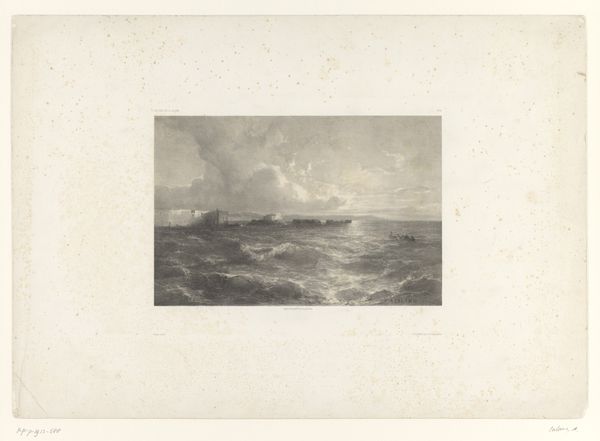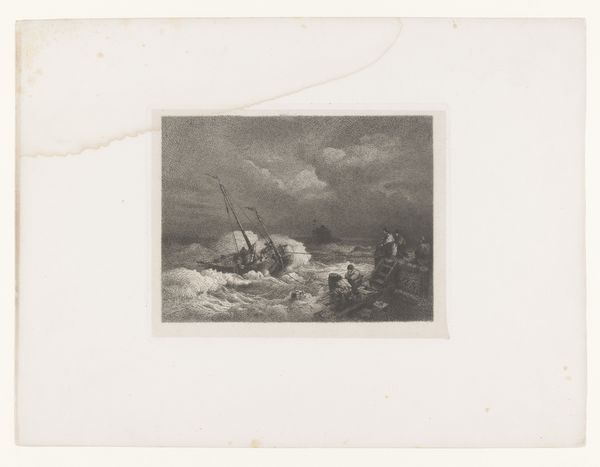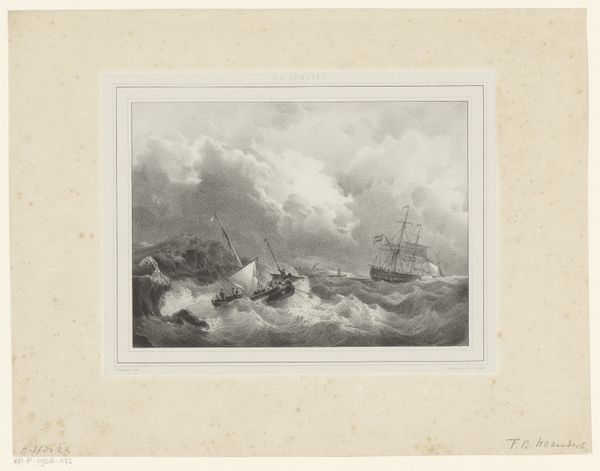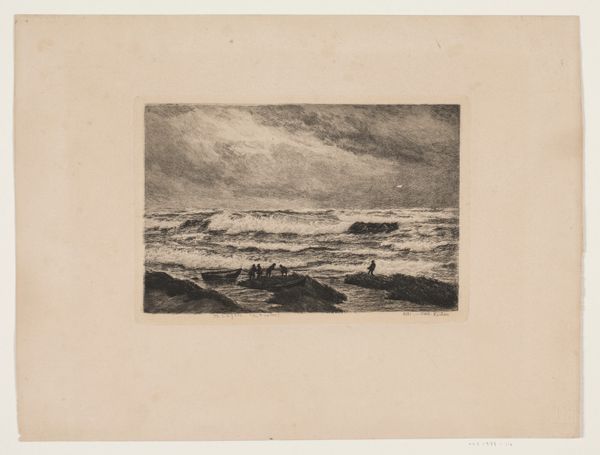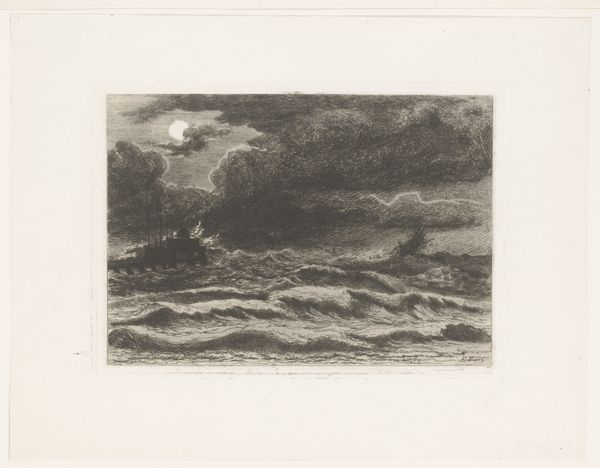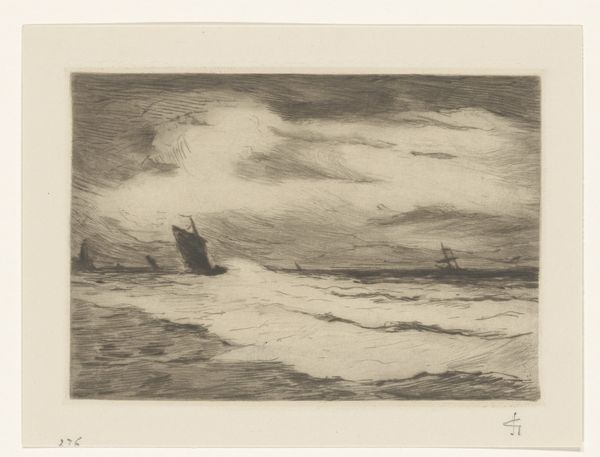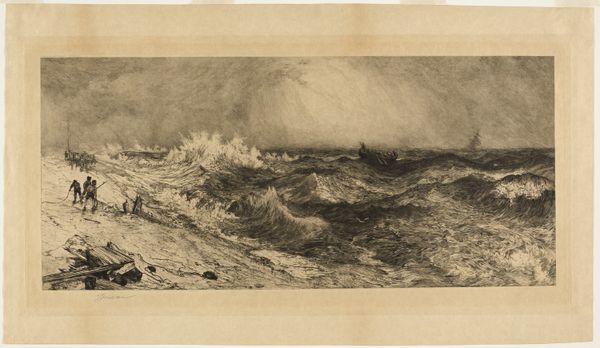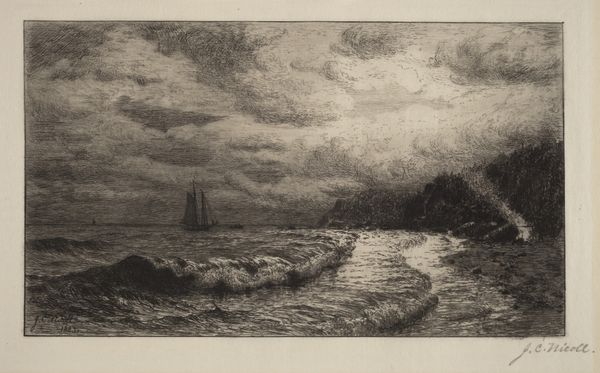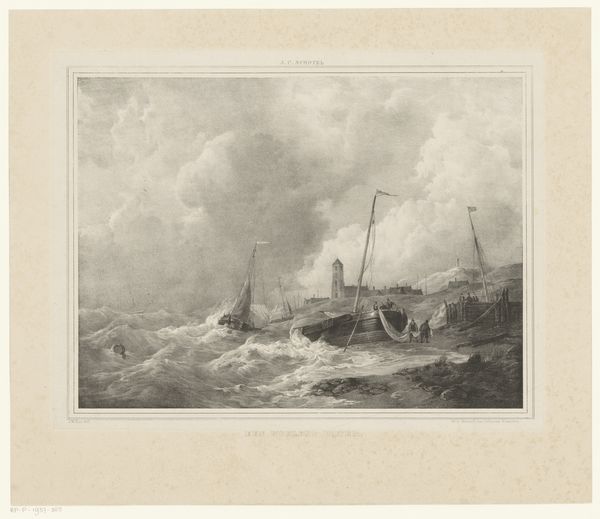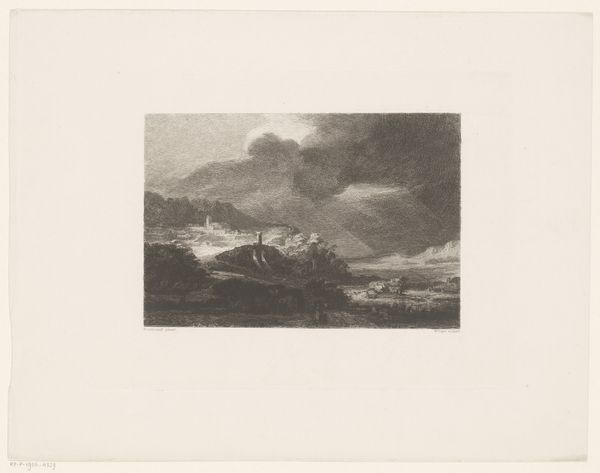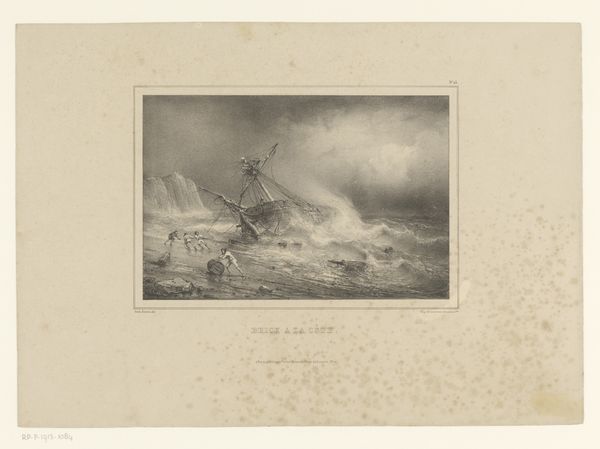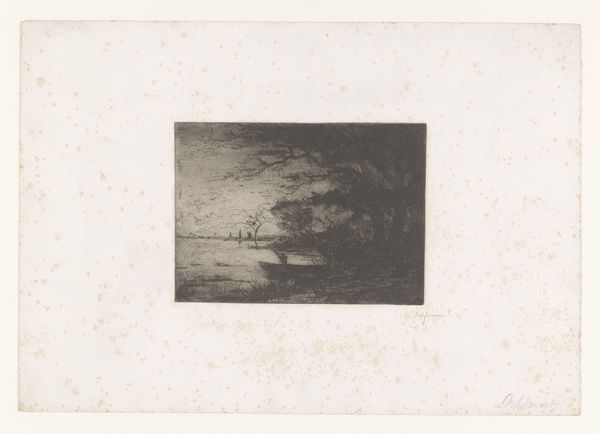
print, etching
# print
#
impressionism
#
etching
#
landscape
#
realism
Dimensions: 5 11/16 x 9 3/4 in. (14.45 x 24.77 cm) (plate)12 7/8 x 17 1/2 in. (32.7 x 44.45 cm) (sheet)
Copyright: Public Domain
Curator: We are looking at James Craig Nicoll’s "The Smugglers' Landing Place," created in 1883. This print is an etching, currently residing at the Minneapolis Institute of Art. It strikes me immediately as quite atmospheric, almost foreboding. What are your initial thoughts? Editor: The somberness you describe resonates. I’m intrigued by the narrative suggested. “Smugglers' Landing Place” evokes complex layers of illicit economies, labor exploitation, and resistance. Nicoll, perhaps, offers us a window into challenging the norms of commerce within this coastal community. Curator: Yes, Nicoll uses the etching process meticulously here. Note the subtle variations in line work; they help create the overall sense of depth and the play of light across the water. I find it incredible how a single plate could yield this textural complexity and tonal range. We are witnesses to a traditional practice, an intimate connection with materials to deliver something tangible, like an unstated contract. Editor: Indeed! And how was this print then consumed? Who had access to it, and what messages did its existence convey during that era? Perhaps this piece subtly critiques or champions unregulated economic practices. A smuggler subverts established systems, driven either by poverty or profit—or both. It prompts a lot of questions around exploitation and economic disparities tied to landscape paintings that often romanticize the environment, obfuscating these material realities. Curator: Absolutely, because consider that prints like these were also commercially available, allowing broader audiences, middle class for example, access to art depicting such subjects and narratives, therefore playing into, if not shaping their perception of said landscapes, in relation to social hierarchy, criminal activity, morality... it is amazing that a modest etching plate became part of our shared language. Editor: Nicoll challenges us to look deeper into the visual representation of places. I now see a subtle reminder to examine those who might have existed outside societal norms, surviving by the fringes of trade within often harsh environmental constraints. Curator: Looking closely reveals not merely aesthetics but also insights into past industries and socio-economic structures, rendered tangible via print. It allows one to remember not only artistic but also working histories, all from observing textures in print! Editor: An impactful testament to both Nicoll’s technique, and a prompt for our continued probing beyond immediate representation.
Comments
No comments
Be the first to comment and join the conversation on the ultimate creative platform.
